Founded by a Canadian filmmaker and observed every year on August 12th, World Elephant Day is a real thing, calling attention to the illegal poaching of elephant tusks for ivory, both in Africa and Asia. In fact, Asian elephants are on the endangered species list with less than 40,000 living in the wild today. It’s sad that these magnificent animals, who travel in groups to protect their young, don’t have many natural predators because of their size—but there’s always the two-legged kind.
As everyone knows, the elephant (“zo” in Japanese) is Zojirushi’s mascot, which was chosen for its symbol of wisdom, reliability and sense of comfort. Previously established as Kyowa Manufacturing, the company changed its name to Zojirushi in 1961 and has been as steady and strong as its namesake since then.
To celebrate World Elephant Day and Zojirushi, I made a bento lunch and branded it with their mascot. Pretty cool? So many useful compartments, so many dishes to pack!
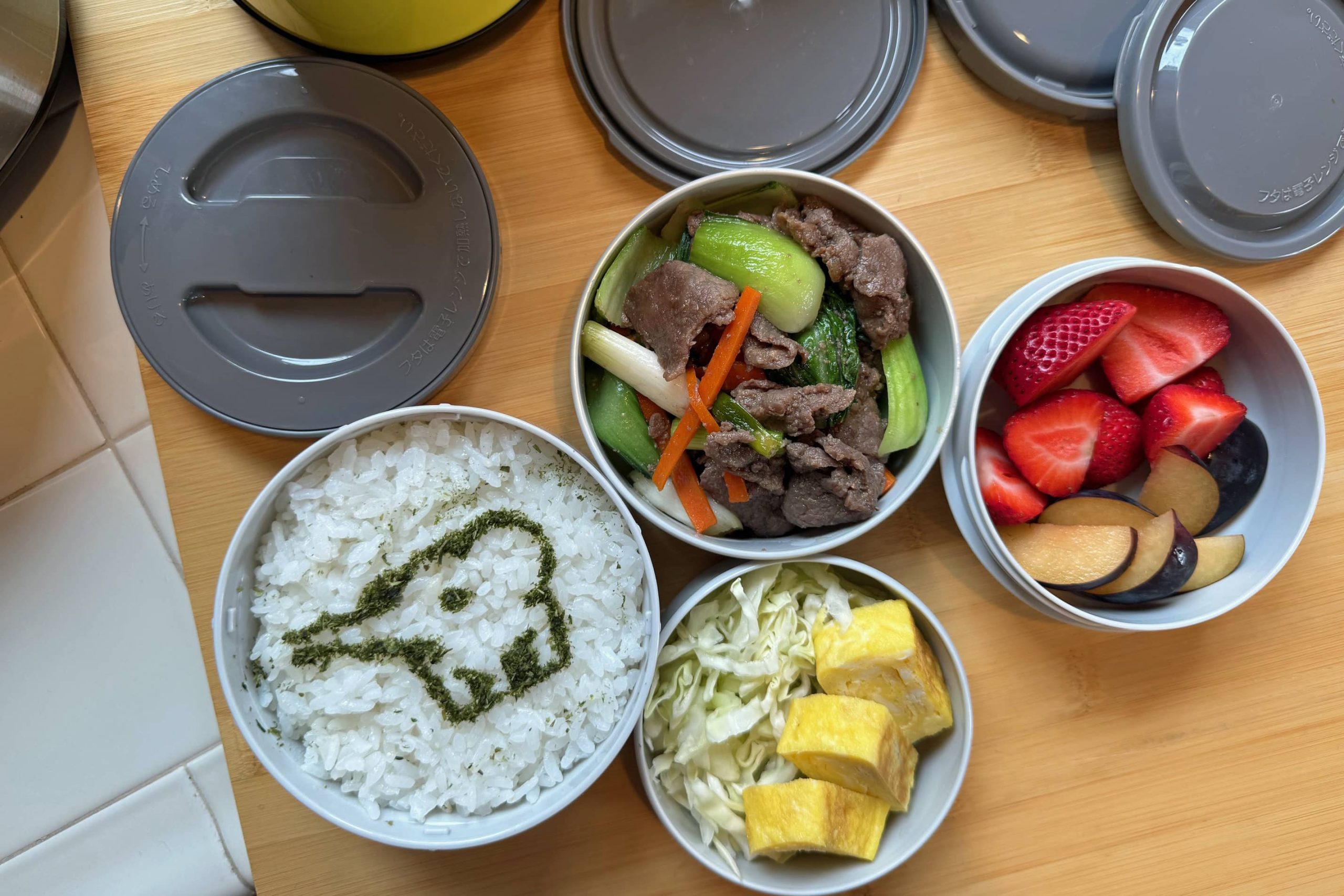
Lately as I get older (yes, it’s true), I’ve been noticing how my taste buds aren’t satisfied until I get the full flavor bomb of whatever I eat. Meaning it leaves me sad and unfulfilled—even downright angry if I don’t get it, you know what I mean? That goes for cooking at home or going out to restaurants, both. Even worse if I paid for it; that’s when I really get mad.
This is my wife’s Korean braised chicken, called dakbokkeumtang. If you want to be blasted with flavor, look no further than Korean food. Braising is a cooking style that involves searing your ingredients first to bring out the flavor, then letting it stew in its own juices or adding sauces if it needs more liquid. It’s almost the perfect dish for using an electric skillet.
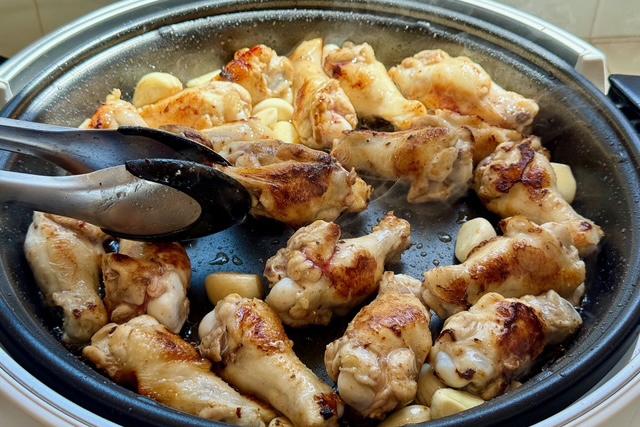
The sauce is key. This recipe is from Umma, A Korean Mom’s Kitchen Wisdom, one of a number of Korean cookbooks that my wife loves to read. But Braised Chicken is pretty common so I don’t think you’ll have trouble finding the right recipe for you. And you can make it as spicy as want, too.
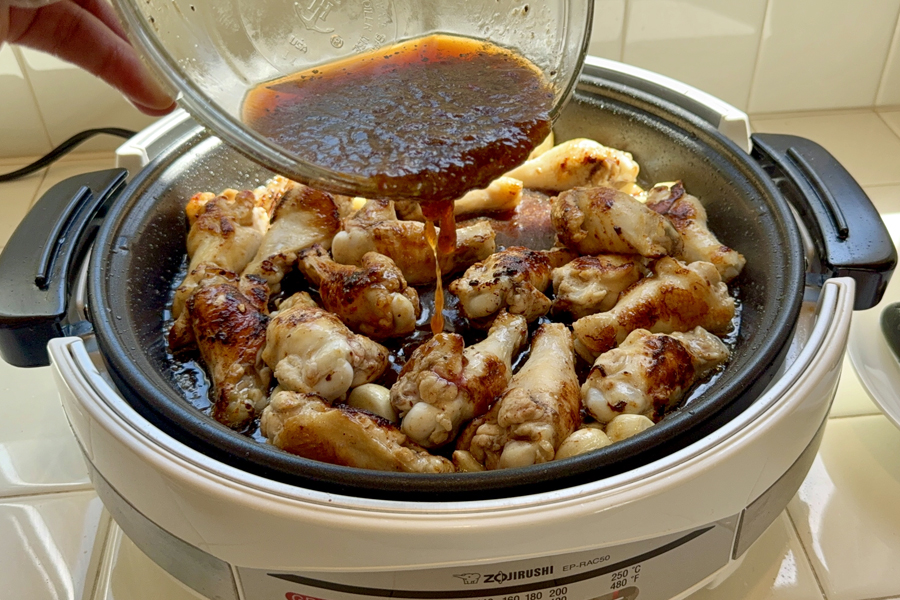
The finished dish is so good it sometimes makes me forget that I love Japanese food the best, ha-ha! The trick is to not get the two mixed up, really. By that I mean Japanese-style Korean BBQ is pretty dang good, but it can be somewhat mild if you’ve had the Korean kind. I mean, even the kimchi is different. By the same token, Koreans do a good job with Japanese tonkatsu or udon, but some delicate flavors are missing. I’m not saying anything more on this matter—I’d like to keep the peace at my house.
You know what makes this skillet my favorite? The fact that you have two choices of pans to cook, depending on how much you have or how deep you need it to be. Believe me, this is an underrated feature.
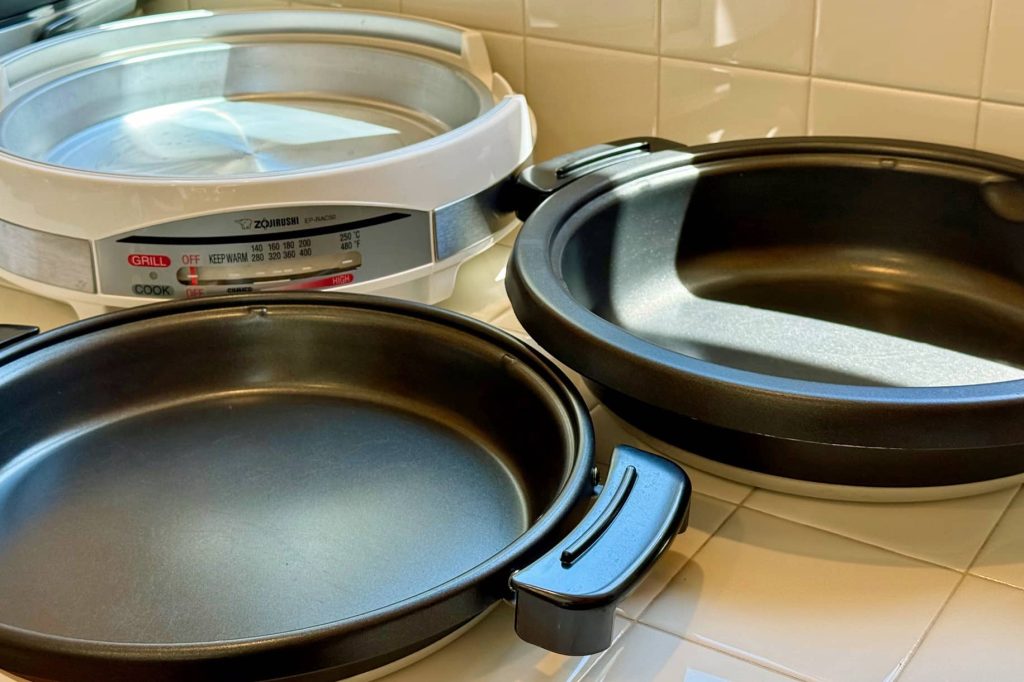
One flavor blast that never disappoints is good ‘ol fashioned Salisbury steak. If you’re old enough to remember TV Dinners, you know what I’m talking about. I think they still exist, the only difference being that all the trays are microwavable now. One of my favorites was Salisbury steak, not the same as a hamburger steak.
It was named after a Dr. J.H. Salisbury, who promoted a meat-based diet for better health in the mid-1800s. Basically the difference between a Salisbury steak and a hamburger steak is the Salisbury contains breadcrumb filling, broth and seasoning, and served with a rich brown gravy of mushrooms and sliced onions. The hamburger steak is a simpler patty of seasoned ground beef, also served with a gravy or any other kind of topping.
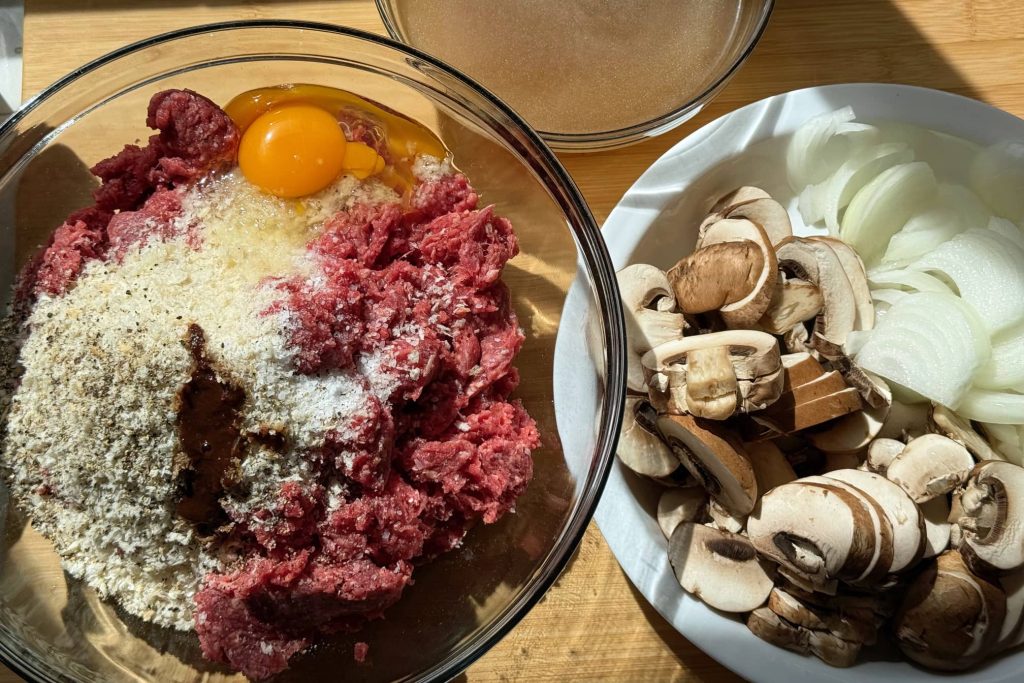
They plump up pretty good in my electric skillet.
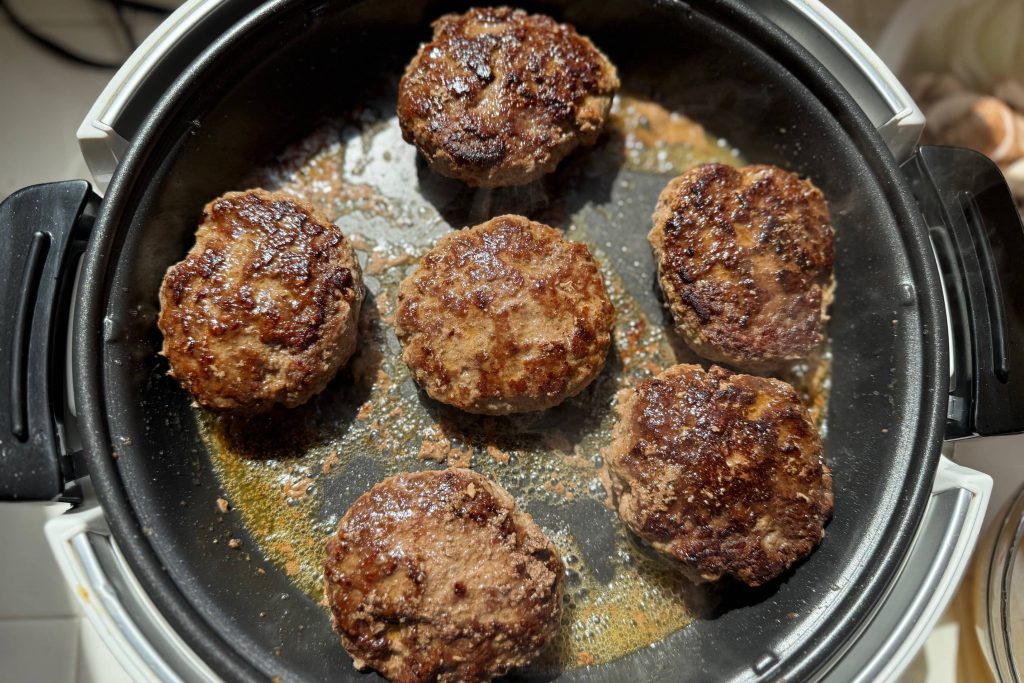
Time to fry up the onions and mushrooms.
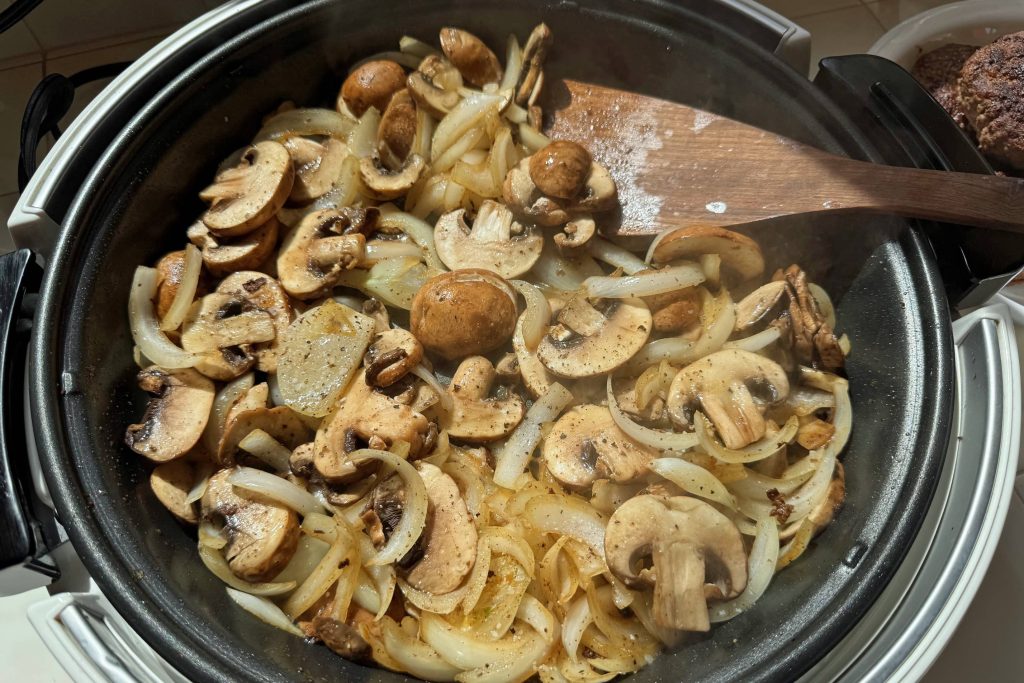
Putting it all together in one pan.
The only thing that can beat a good Salisbury steak is a great hambagu, which is the Japanese way of making a hamburger steak. Are you confused yet? They’re all different, but very similar. In the same way the Salisbury puts more filling in the ground beef patty, the Japanese hambagu adds even more to give it more height and flavor. The demi-glace brown sauce used as the topping is also richer and based on classic French cuisine.
At our house, all of this doesn’t matter because we eat everything with rice anyway! Ha-ha.
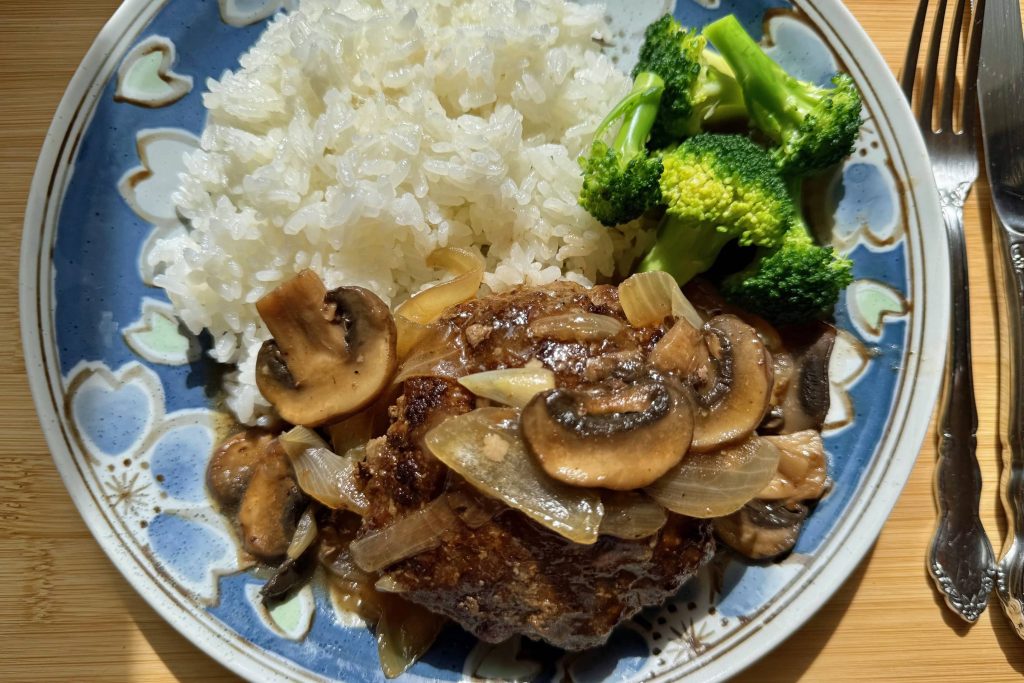
Products used in this post: Mr. Bento® Stainless Lunch Jar SL-JBE14, Gourmet d’Expert® Electric Skillet EP-RAC50
Please note that these recipes were not tested by Zojirushi America
All images by Bert Tanimoto ©2025
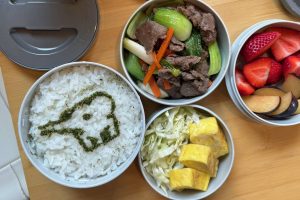
Leave a Reply